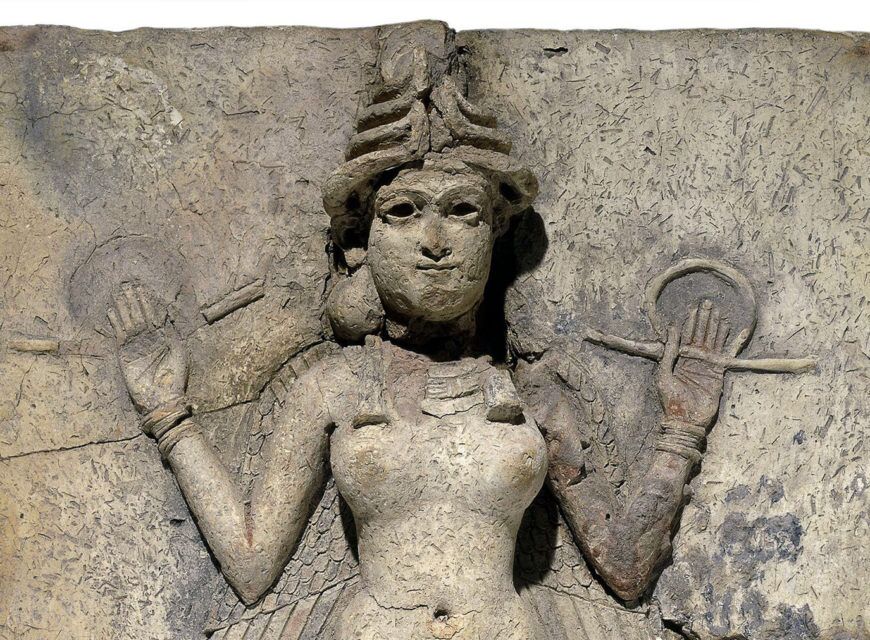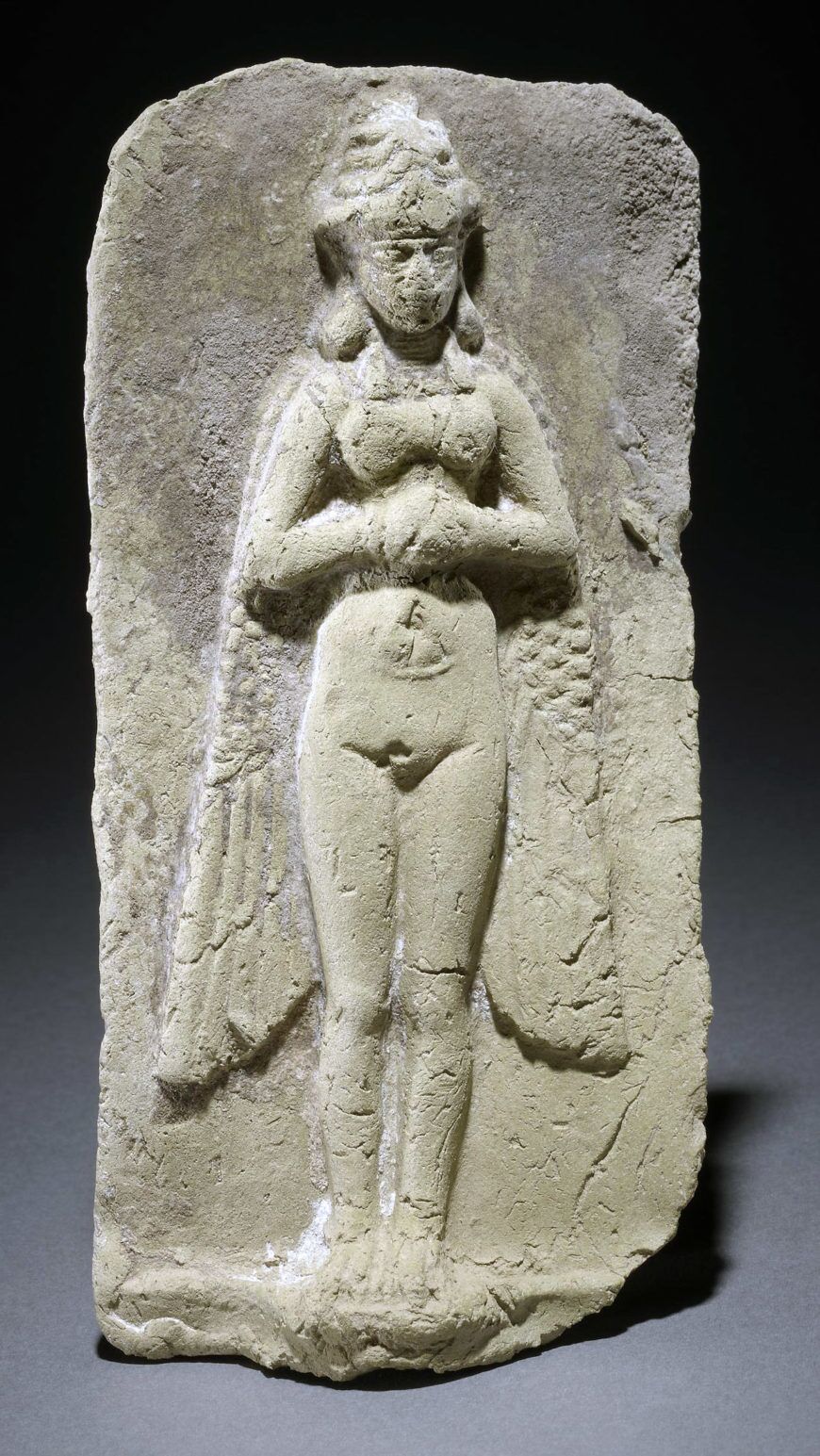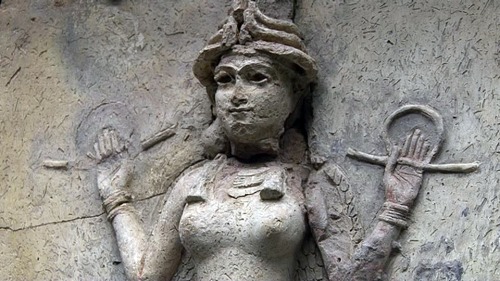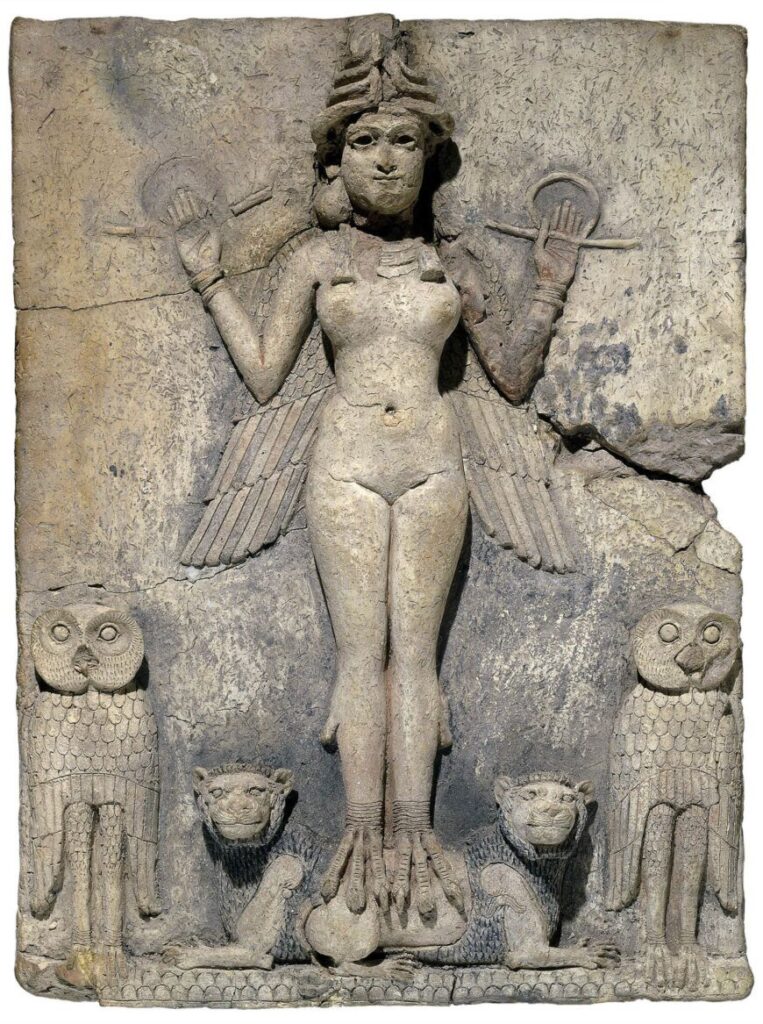The ancient world of Mesopotamia, with its rich tapestry of myths and legends, has long captivated the imaginations of scholars and enthusiasts alike. At the heart of this captivating realm stands the enigmatic figure known as the “Queen of the Night,” a captivating deity whose image has been preserved on a remarkable clay plaque. This awe-inspiring work of art, dating back to the Old Babylonian period (c. 1750 B.C.E.), offers a tantalizing glimpse into the complex and multifaceted world of Mesopotamian mythology.
In this blog post, we will embark on a journey to unravel the mysteries surrounding this remarkable artifact, exploring the symbolism, significance, and the various interpretations that have been proposed by scholars over the years. Through a detailed examination of the plaque’s intricate design and the rich cultural context in which it was created, we will gain a deeper understanding of the beliefs, rituals, and the divine pantheon that shaped the lives of the ancient Mesopotamian people.
The Plaque and Its Artistic Mastery

The “Queen of the Night” plaque is a true masterpiece of ancient Mesopotamian art. Crafted from baked straw-tempered clay, the plaque features a captivating high-relief figure of a curvaceous, naked woman. Adorned with the distinctive horned headdress characteristic of Mesopotamian deities, she holds the rod and ring of justice, symbols of her divine authority.
The figure’s long, multi-colored wings hang downwards, indicating her association with the Underworld. Her legs, ending in the talons of a bird of prey, further reinforce this connection, as do the two owls that flank her. The background of the plaque was originally painted black, suggesting her affiliation with the night.
Standing atop the backs of two lions, the figure is set against a backdrop of a scale pattern, which likely represents the mountainous terrain. The attention to detail and the skill with which this plaque was crafted is a testament to the artistic prowess of the Mesopotamian artisans who created it.
Interpreting the Symbolic Significance

The “Queen of the Night” plaque is a complex and multifaceted work of art, rich in symbolic meaning. The figure’s striking appearance and the various elements that adorn her have been the subject of extensive scholarly debate, with several theories proposed regarding her identity and the significance she held within the Mesopotamian pantheon.
The Goddess Ishtar
One of the most prevalent interpretations suggests that the figure on the plaque is an aspect of the goddess Ishtar, the Mesopotamian goddess of sexual love, fertility, and war. Ishtar was a powerful and complex deity, revered throughout the ancient Near East, and her association with the Underworld and her role as a warrior goddess are well-documented.
The plaque’s depiction of the figure’s curvaceous, nude form, as well as her horned headdress and the symbols of justice she holds, align with the iconography commonly associated with Ishtar. Additionally, the presence of the lions, which were sacred to Ishtar, further reinforces this interpretation.
The Goddess Ereshkigal
Another theory posits that the figure on the plaque may be the goddess Ereshkigal, Ishtar’s sister and rival, who ruled over the Underworld. Ereshkigal’s association with the Underworld and the night, as well as her role as a powerful and sometimes vengeful deity, would be consistent with the plaque’s imagery and symbolism.
The figure’s wings and talons, as well as the black background, could be seen as references to Ereshkigal’s dominion over the realm of the dead. Additionally, the presence of the owls, which were often associated with the Underworld in Mesopotamian mythology, lends support to this interpretation.
The Demoness Lilitu
A third interpretation suggests that the figure on the plaque may be the demoness Lilitu, also known as Lilith in the Bible. Lilitu was a powerful and often feared figure in Mesopotamian mythology, associated with the night, sexuality, and the Underworld.
The plaque’s depiction of the figure’s nude, curvaceous form, as well as her association with the Underworld and the night, could be seen as aligning with the characteristics and iconography commonly associated with Lilitu. Additionally, the figure’s bird-like talons and the presence of the owls may further reinforce this interpretation.
The Plaque’s Cultural Context and Historical Significance

The “Queen of the Night” plaque is not only a remarkable work of art but also a valuable historical artifact that provides insight into the cultural and religious beliefs of ancient Mesopotamia. The plaque’s provenance and the circumstances surrounding its discovery and acquisition add to the intrigue and importance of this remarkable object.
Provenance and Acquisition
The plaque was first discovered in southern Iraq and is believed to have been created during the Old Babylonian period, around 1750 B.C.E. Thermoluminescence tests have confirmed that the plaque was indeed made during this time, lending credence to its authenticity and historical significance.
The plaque’s journey to the British Museum, where it is currently housed, is also noteworthy. It is believed to have arrived in England as early as 1924 and was later brought to the British Museum in 1933 for scientific testing. The plaque was then known as the “Burney Relief,” after its owner at the time.
Cultural and Historical Significance
The “Queen of the Night” plaque is not only a remarkable work of art but also a valuable historical artifact that provides insight into the cultural and religious beliefs of ancient Mesopotamia. The figure’s striking appearance and the various elements that adorn her offer a glimpse into the complex and multifaceted world of Mesopotamian mythology, shedding light on the beliefs, rituals, and the divine pantheon that shaped the lives of the ancient Mesopotamian people.
Furthermore, the plaque’s association with the Underworld and its potential connection to powerful female deities like Ishtar, Ereshkigal, and Lilitu, highlights the significant role that women played in Mesopotamian religion and mythology. This is particularly significant, as the ancient Near East is often perceived as a predominantly patriarchal society, and the prominence of these female deities challenges this narrative.

Conclusion
The “Queen of the Night” plaque is a truly remarkable and captivating work of ancient Mesopotamian art. Its intricate design, rich symbolism, and the various interpretations that have been proposed by scholars over the years have made it a subject of enduring fascination and scholarly inquiry.
Through our exploration of this remarkable artifact, we have gained a deeper understanding of the complex and multifaceted world of Mesopotamian mythology, the beliefs and rituals that shaped the lives of the ancient Mesopotamian people, and the significant role that female deities played in their pantheon.
As we bid farewell to our journey through the enigmatic world of the “Queen of the Night,” we are left with a renewed appreciation for the enduring legacy of Mesopotamian culture and the enduring power of this captivating work of art.
